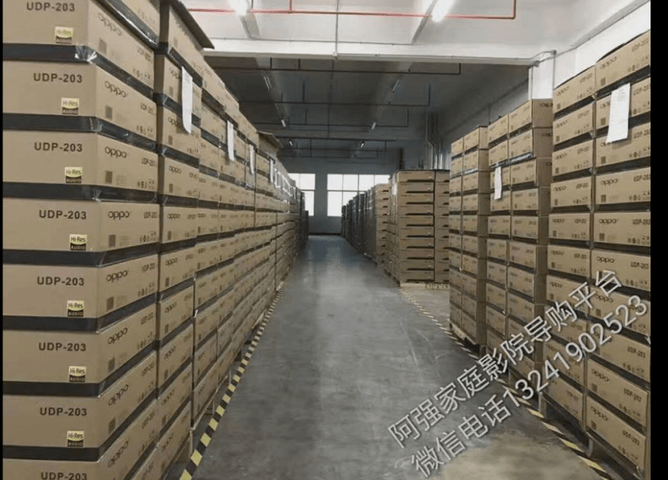While its exact price is still under review, the UBD-203 should launch at between $500 and $600. The player looks to be about the same size as the company's smallest current BD player, BDP-103, making it slightly shorter than Oppo's upscale BDP-105. It wouldn't be surprising if Oppo comes out with a premier UHD model (a UBD-205, perhaps?) at a later date, but we don't anticipate more than the UBD-203 for now.
Unlike the current Samsung and Philips players, but like the pricier
Panasonic DMP-UB900, the Oppo offers a front-panel display. (Our review of the Panasonic will be posted in the coming weeks.)
In addition to Ultra HD discs (including HDR10 high dynamic range, with a later firmware update promised for Dolby Vision), the UBD-203 will play back Blu-ray, Blu-ray 3D, DVD, DVD-Audio, SACD, and audio CD. It will decode audio-only formats as well: AIFF, WAV, ALAC, APE, and FLAC. It also plays DSD (Direct-Stream Digital) audio files in stereo DSD64/128 or multi-channel DSD64. It will decode all current audio formats for audio on video, up to and including Dolby TrueHD and DTS-HD Master Audio, and output them either in PCM or bitstream. When set for a bitstream output it will support sources carrying immersive audio formats such as Dolby Atmos and DTS:X.
There are two HDMI outputs, one for audio only and the other for both audio and video (allowing for a separate audio connection to older AVRs and pre-pros that can't pass UHD). Two USB 3.0 ports on the back panel (and a third on the front) allow for media file playback. The latter are fed by 32-bit digital to analog converters from AKM of Japan.
Built-in Wi-Fi or wired Ethernet can also connect to a user's home network to access media files stored on computers and home servers. There's also an HDMI 2.0
input for external streaming devices and set-top boxes, and both digital and analog 7.1-channel audio outputs.
Read more at
http://www.soundandvision.com/content/oppo-does-ultra-hd#Vdbh2IDHsVmP54Qe.99




 but it is obvious some of the colors are blown out.
but it is obvious some of the colors are blown out.

